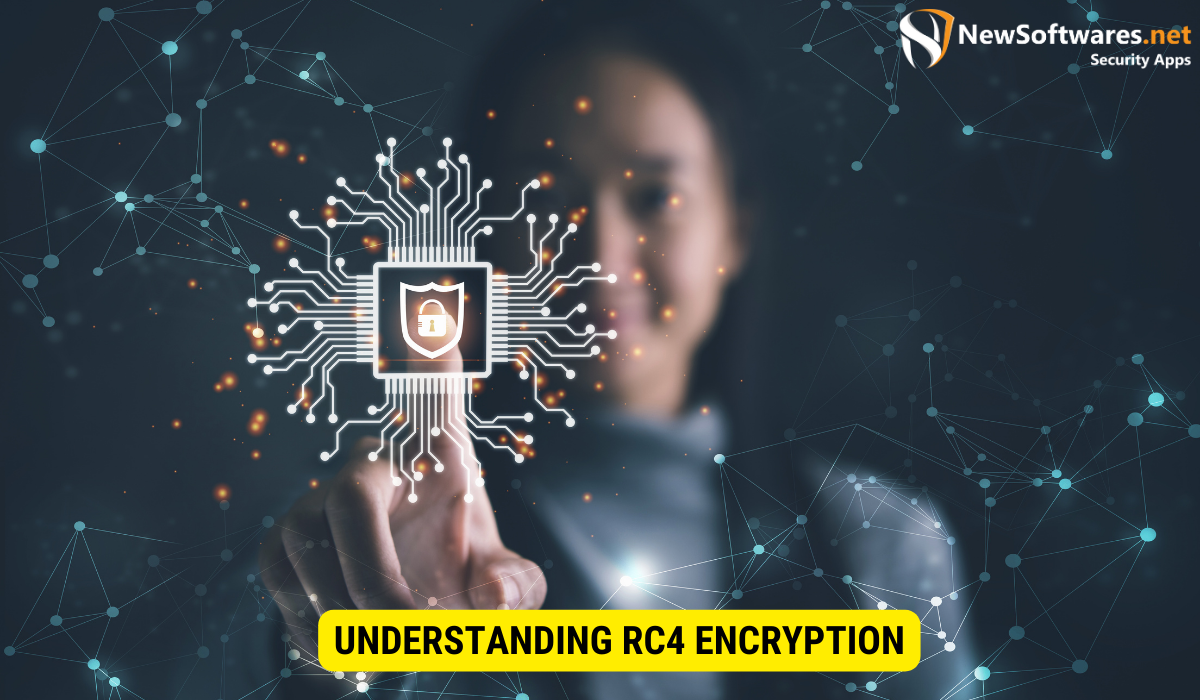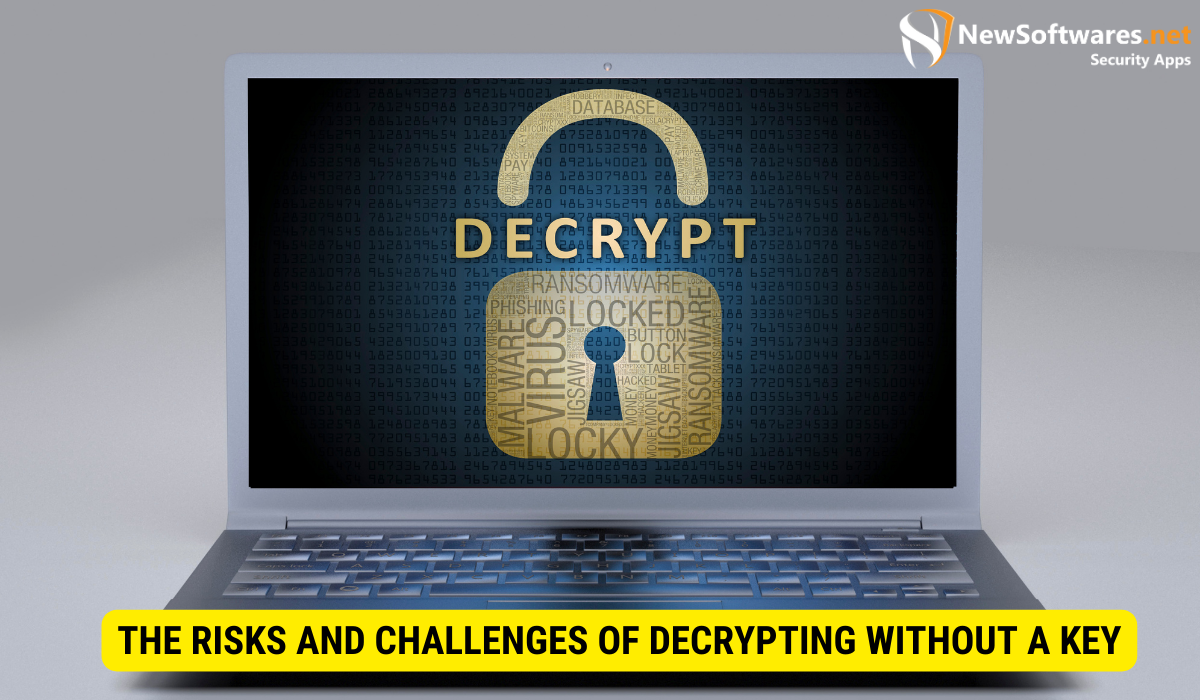RC4 encryption is a widely used symmetric encryption algorithm that was created by Ron Rivest in 1987. It is known for its simplicity and efficiency, and it has been widely implemented in various applications and protocols. However, as with any encryption algorithm, there may be situations where you need to decrypt data encrypted using RC4 without the key.
Together, we will explore the process of decrypting data with RC4 encryption without a key, the techniques that can be used, the risks and challenges involved, as well as safety measures and best practices to protect your data.
Understanding RC4 Encryption

Before we dive into decrypting data without a key, let’s first understand the basics of RC4 encoding. RC4 is a stream cipher, that means that it encrypts data bit by bit or byte by byte. It uses a combination of a secret key and a pseudo-random number generator to generate a keystream, which is then XORed with the readable to produce the ciphertext. The same key and algorithm are used to encrypt and decrypt the data, making it symmetric encryption.
The Basics of RC4 Encryption
The RC4 encryption algorithm operates on a variable-length key ranging from 1 to 256 bytes. It consists of two main parts: the key setup phase and the encryption phase. During the key setup phase, the key is used to initialize the state of the cipher, which is represented by a permutation of all possible byte values. This permutation is then used to generate the keystream during the encryption phase.
Let’s delve deeper into the key setup phase of RC4 encryption. The key is processed byte by byte, and each byte is used to modify the state of the cipher. This modification involves swapping elements of the permutation based on the value of the current byte. The key setup phase ensures that the state of the cipher is dependent on the key, making it difficult for an attacker to determine the key through cryptanalysis techniques.
Once the key setup phase is complete, the encryption phase begins. In this phase, the keystream is generated by repeatedly modifying the state of the cipher using a specific algorithm. The keystream is then XORed with the plaintext to create the ciphertext. The XOR operation ensures that the encryption process is reversible, allowing the same key and algorithm to be used for decryption.
The Role of Keys in RC4 Encryption
Keys play a vital role in RC4 encryption. The security of the encrypted data relies on the secrecy of the key. Without the key, it becomes challenging to decrypt the data as the RC4 algorithm is designed to be resistant against various cryptanalysis techniques.
It is important to note that the strength of RC4 encryption depends on the length and randomness of the key. Longer and more random keys provide stronger encryption, while shorter or predictable keys can be vulnerable to attacks. Therefore, it is recommended to use keys that are as long and random as possible to ensure the security of the encrypted data.
Furthermore, the key should be kept confidential and shared only with authorized parties. If an invader gains access to the key, they can easily decrypt the data and compromise its confidentiality. Therefore, proper key management practices, such as secure key storage and distribution, are crucial in maintaining the security of RC4 encrypted data.
In conclusion, RC4 encryption is a widely used symmetric encryption algorithm that operates on a variable-length key. It utilizes a key setup phase and an encryption phase to generate a keystream, which is then XORed with the readable text to produce the ciphertext. The secrecy and randomness of the key play a significant role in the security of RC4 encrypted data. By understanding the basics of RC4 encryption and the importance of keys, we can better appreciate the complexities involved in decrypting data without a key.
The Process of Data Decryption
Decrypting data encrypted with RC4 without a key is a complex task that require a deep understanding of the algorithm and advanced cryptographic techniques. Let’s take a closer look at the decryption process.
Decryption: A General Overview
In general, the decryption process involves applying the same algorithm as used in the encryption process, but in reverse. This means that the encrypted data is XORed with the keystream to recover the original plaintext. However, without the key, recovering the keystream becomes the main challenge.
Decryption in RC4: A Closer Look
Decrypting data encrypted with RC4 without a key involves trying different keys and analyzing the resulting ciphertext to determine if the decryption was successful. This process is commonly known as a brute force attack. Brute force attacks involve trying all possible keys until the correct key is found. However, due to the large number of possible keys, brute force attacks can be computationally expensive and time-consuming.
Techniques for Decrypting Without a Key
While brute force attacks are one method for decrypting data without a key, there are other techniques that can be used to speed up the process and increase the chances of success.
Brute Force Attacks
As mentioned earlier, brute force attacks involve trying all possible keys until the correct key is found. This can be done systematically by iterating through all possible key combinations and applying the decryption algorithm to each combination. However, due to the large key space of RC4 encryption, this method may not be feasible in practice for longer keys.
Statistical Analysis Methods
Statistical analysis methods involve analyzing the properties of the encrypted data to gain insights into the key used for encryption. This can include analyzing the distribution of byte values in the ciphertext or looking for patterns or regularities in the data.
Cryptanalysis Techniques
Cryptanalysis techniques involve analyzing the cryptographic algorithm itself to identify vulnerabilities that can be oppressed to decrypt the data without the key. This can include looking for algorithmic flaws or exploiting known vulnerabilities or attacks specific to RC4 encryption.
The Risks and Challenges of Decrypting Without a Key

Decrypting data without a key comes with several risks and challenges that need to be considered.
Potential Legal Implications
Decrypting encrypted data without proper authorization may be illegal in many jurisdictions. It is important to ensure that you have the legal right to decrypt the data or obtain proper authorization before attempting to decrypt it without a key.
Technical Difficulties and Limitations
Decrypting data without a key can be technically tricky and may require specialized knowledge and skills in cryptography and cryptanalysis. It can also be computationally costly and time-consuming, especially for longer keys or complex encryption algorithms like RC4.
Safety Measures and Best Practices
While decrypting data without a key may be necessary in certain situations, it is important to take precautions to protect your data from unauthorized decryption and ensure the integrity of your encrypted data.
Protecting Your Data from Unauthorized Decryption
To prevent unauthorized decryption of your data, it is essential to implement strong encryption algorithms and use long and complex keys. Regularly update and secure your encryption keys to minimize the risk of key compromise.
Ensuring the Integrity of Your Encrypted Data
Integrity checks such as using digital signatures or cryptographic hashes can help ensure the integrity of your encrypted data. These checks can detect any unauthorized modifications or tampering of the data.
Key Takeaways
- RC4 encryption is a widely used symmetric encryption algorithm that operates on a secret key and a pseudo-random number creator to generate a keystream for encrypting and decrypting data.
- Decrypting data encrypted with RC4 without a key is a challenging task that may involve techniques such as brute force attacks, statistical analysis methods, or cryptanalysis techniques.
- There are risks and challenges associated with decrypting data without a key, including potential legal implications and technical difficulties.
- To protect your data from unauthorized decryption, implement strong encryption algorithms, use long and complex keys, and regularly update and secure your encryption keys.
- Ensure the integrity of your encrypted data by using integrity checks such as digital signatures or cryptographic hashes.
FAQs
Is it legal to decrypt data without a key?
Decrypting data without proper authorization or legal rights may be illegal in many jurisdictions. It is important to ensure that you have the legal right or obtain proper authorization before attempting to decrypt data without a key.
Can all encryption algorithms be decrypted without a key?
Decrypting data without a key depends on the encryption algorithm and its security properties. Some encryption algorithms, such as RC4, have known vulnerabilities that can be exploited to decrypt data without a key. However, modern encryption algorithms are designed to be resistant against such attacks.
How long does it take to decrypt data without a key?
The time it takes to decrypt data without a key depends on various factors, including the length of the encryption key, the complexity of the encryption algorithm, and the available computational resources. Brute force attacks, for example, can be computationally expensive and time-consuming for longer keys.
What are the risks of decrypting data without a key?
Decrypting data without a key comes with several risks, including potential legal implications, technical difficulties, and limitations. It requires specialized knowledge and skills in cryptography and cryptanalysis and can be computationally expensive and time-consuming.
How can I protect my data from unauthorized decryption?
To protect your data from unauthorized decryption, implement strong encryption algorithms, use long and complex keys, and regularly update and secure your encryption keys. Additionally, use integrity checks such as digital signatures or cryptographic hashes to ensure the integrity of your encrypted data.
Conclusion
Decrypting data encrypted with RC4 without a key is a complex task that requires advanced knowledge and skills in cryptography and cryptanalysis. While there are techniques and methods that can be used to decrypt data without a key, such as brute force attacks or statistical analysis methods, it is important to consider the risks and challenges involved. Protecting your data from unauthorized decryption and ensuring the integrity of your encrypted data are key considerations when dealing with encryption and decryption.
